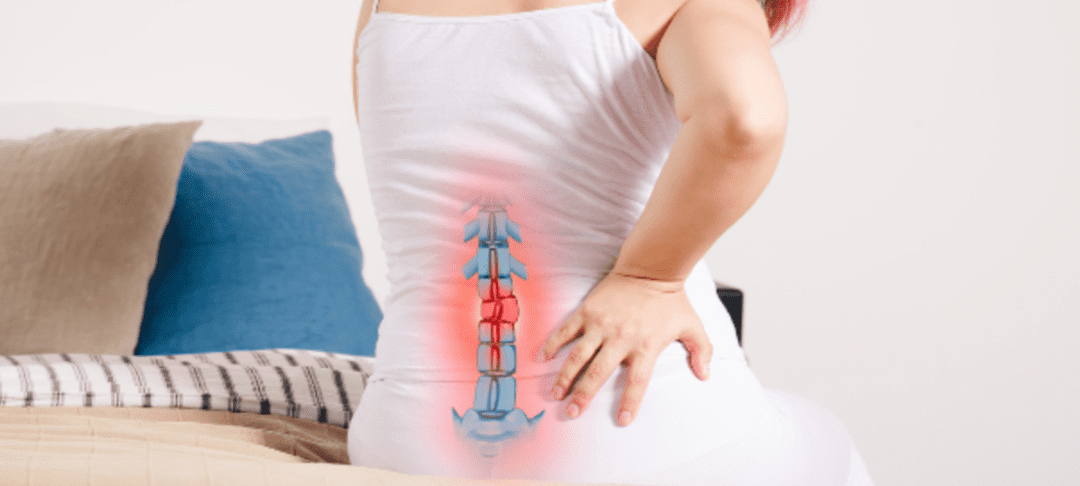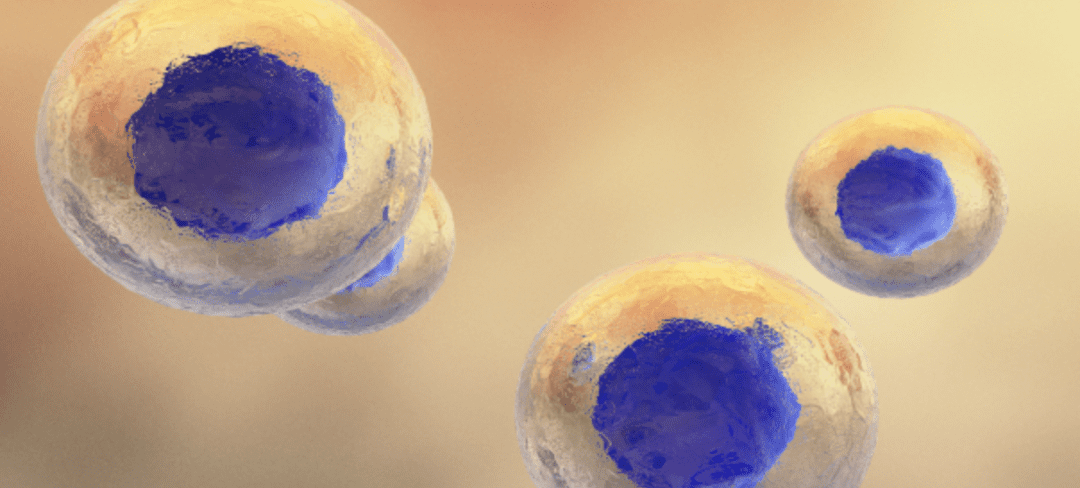
by admin | Mar 2, 2022 | Health Awareness, Pain Management, Rheumatoid Arthritis
Do you suffer from aches and pains due to rheumatoid arthritis (RA)? The stiffness caused by RA is a nuisance for many patients and it is especially prevalent in the morning. When you awake from even the most comfortable of sleep, your joints may feel painful and stiff for several hours. How can this be avoided?
4 Ways to Reduce Morning Stiffness for RA Patients
Most patients turn to over-the-counter pain medications to ease their RA morning stiffness, but there may be some other alternatives. The following are four ways to reduce rheumatoid arthritis stiffness and start your day off right.
1. Turn Up the Heat
Experts suggest turning your heat up about 30 minutes before you plan to start your day. This will allow time for your joints to warm up and feel less stiff while you take it easy and relax in bed or have your morning coffee. By the time you need to get ready and head out the door, your body will feel more relaxed, and stiffness may be decreased.
2. Take Medication as Soon as You Wake Up
While you’re turning up the heat, go ahead and take any of your rheumatoid arthritis medications. You want to give your medication time to kick in and take effect before you begin your morning routine. This will help ease most of the aches and pains that you may feel in your joints during morning activities.
3. Practice Gentle Movements
Once you are ready to get out of bed, practice gentle movements rather than jumping to your feet and rushing around the house. Simple range-of-motion exercises can help stretch your muscles and loosen joints in the hands, wrists, and feet.
4. Take A Hot Shower
While many people opt for nighttime showers, RA patients may benefit from taking a hot morning shower. Taking a warm shower upon waking in the morning will help loosen and relax the joints, decreasing any stiffness or aching.
If you suffer from chronic pain from your rheumatoid arthritis, you may want to explore how regenerative medicine, also known as stem cell therapy, may help manage symptoms. In addition, some patients are discovering help from peptides. These are chains of amino acids, and some may have the potential for those with chronic pain. Alternative medicine does not offer a cure, but for some, it may help improve quality of life.

by Stemedix | Feb 28, 2022 | Pain Management, Degenerative Disc Disease
Achy or sharp pain that radiates to the shoulder, arm, buttocks, or leg may be a sign that you have a herniated disc in your neck or back. Herniated discs occur in any part of the spine but are most common in the lower back. Depending on the location, the herniated disc may cause pain, numbness, or weakness in your arms or legs. Here we will talk about how to manage herniated disc pain.
What Is a Herniated Disc?
Your spine has 33 stacked vertebrae, which protect the spinal cord and nerves from injury. Between those bones are intervertebral discs. The discs serve as soft, rubbery cushions under constant pressure and act as the spine’s shock absorbers.
Intervertebral discs consist of two parts: a soft, jellylike center called a nucleus, and a more rigid, flexible outer ring called an annulus. When the disc tears, leaks, or ruptures, the nucleus pushes out and puts pressure on the nearby spinal nerves. This is known as a herniated disc.
Most often, gradual, age-related wear and tear causes herniated discs. With age, the discs become less flexible and prone to tearing or rupturing with even minor strain or twists.
Relieving Herniated Disc Pain
Herniated discs usually heal on their own over time, but they can still be painful. However, the following strategies often offer relief from herniated disc pain:
Reduce Inflammation and Tension
When you experience a herniated disc, the muscles around the disc may tighten to protect the area. Heat and cold therapy can reduce tightness and inflammation in the body around the disc, causing increased pain at the site.
Heat loosens muscle tightness, increases blood flow, and improves tissue elasticity. In contrast, cold produces an anti-inflammatory effect.
Try applying heat to your back in the morning, before exercise, or for 10–15 minute periods throughout the day to release muscle tension. After exercise or at the end of the day, apply cold to the back to relieve inflammation.
Exercise and Careful Movements
Lack of movement often aggravates herniated discs, as the muscles will lock up and weaken, providing less support to the spine. Low-impact exercise that your body tolerates may assist with pain relief. Exercises to consider include:
- Walking
- Using an elliptical trainer
- Cycling on a recumbent bicycle
Patients with more severe pain may find that water exercises offer the most relief by providing buoyancy along with movement.
Additionally, it’s important to use careful movements while your spine is recovering. For example, avoid standing for long periods, practice good posture, and try not to lift any heavy objects until your symptoms subside.
Myofascial Release or Massage
Myofascial release may improve back pain by manually putting pressure on trigger points. Both physical therapists and massage therapists often use this approach. You can perform myofascial release at home with a lacrosse or therapy ball or with a massage cane.
First, identify points of tension or tenderness on your back. Then, maintain constant pressure on your trigger point for one to two minutes, allowing the muscle to release. After any myofascial release, apply cold therapy to the area to reduce inflammation from the pressure.
If your herniated disc pain persists for more than four to six weeks, causes you to be unable to work, or causes numbness, weakness, or tingling in your arms and legs, you need to have your symptoms evaluated by a physician. If you want to learn more about options you have regarding how to manage herniated disc pain, contact us today and speak with a care coordinator.

by Stemedix | Feb 21, 2022 | Pain Management
Up to 50 million Americans suffer from chronic or long-term pain. Missing work, the inability to do recreational activities, lack of concentration, and poor mental health are all side effects of living with chronic pain. However, one of the last things pain sufferers want to do may be the most effective treatment for chronic pain: exercise, and more specifically, physical therapy. Physical therapy for pain management can increase strength, mobility, and overall wellness for those suffering from chronic pain.
Chronic Pain
Doctors consider pain present for more than 12 weeks to be chronic pain. Some of the most common conditions causing chronic pain include:
Physical therapists typically focus on building strength and mobility when treating pain patients. Additionally, a physical therapist may work with patients to find safe, functional movements that don’t aggravate their pain.
How Physical Therapy Treats Pain
Physical therapists work to treat pain and its source. A physical therapist will look for muscle weakness or stiffness in areas that contribute to chronic pain symptoms. Then, they’ll treat your pain with exercises that help you move better and ease the pain.
Most physical therapy sessions include a variety of training methods.
Low-Impact Aerobic Exercises
Your physical therapist may choose an activity like cycling, walking, or swimming to amplify your heart rate, increase your range of motion, and provide fluid to your joints.
Strengthening Exercises
Your physical therapist may use low weights, resistance bands, weight machines, and bodyweight exercises (lunges and push-ups) to strengthen foundational muscles like your core or abdominal muscles.
Pain Relief Exercises
Pain relief exercises specifically target the source of your pain. For instance, a patient with knee pain may strengthen their leg muscles to support the joint better.
Stretching
Gentle stretches are a fundamental part of physical therapy, as specific stretches can help to reduce pain, make muscle contraction more efficient, and work to release entrapped nerves.
Maintaining a consistent exercise routine can also help you retain the ability to move and function properly, rather than letting your pain render you immobile.
Further Pain Support
When meeting with your physical therapist, discuss further treatment options to mitigate your pain. These treatments may include massage, heat and cold therapy, and transcutaneous electrical nerve stimulation (TENS), which many physical therapists offer in-office.
Lack of movement and exercise worsens chronic pain. However, you can take charge of your pain symptoms by working with a physical therapist to build strength and mobility while lessening your chronic pain. Some patients are exploring stem cell therapy for chronic pain to help manage inflammation and pain. Mesenchymal stem cells (MSCs) are one specific type of stem cell that has the ability to differentiate into different types of cells. They are essentially the raw materials used to generate new tissues. This new alternative option may help patients manage their chronic pain along with conventional methods. If you are interested in learning more about physical therapy for pain management call us today and speak with. a care coordinator.

by Stemedix | Feb 14, 2022 | Pain Management
For decades, the treatment guidelines for pain were rest and inactivity. In contrast, more recent data shows that exercise may reduce the severity of chronic pain and offer well-established benefits, like improved physical and mental health. Some activities can benefit chronic pain patients, while others can exacerbate pain symptoms. No matter what exercise regimen you choose to manage your pain, start slowly, take breaks, and stop if your pain worsens. Here we will overview exercises for pain management.
Walking
Walking is a low-impact cardiovascular exercise that can increase strength, endurance, and heart health. If walking is challenging for you, start slow, and work your way up to walking for 30 minutes, three to five times per week.
Walking increases blood circulation, bringing oxygen to muscles and relieving stiffness. If you use a walker or a cane, bring it with you for support.
Swimming or Water Aerobics
Exercising in water also provides low-impact cardiovascular benefits without creating much stress on your joints and muscles. In addition, patients suffering from mobility issues may find extra comfort in the water, as the feeling of weightlessness may provide relief.
Swimming has the potential to build stronger muscles in the back, shoulders, legs, and core while causing minimal impact to your spine. Additionally, swimming can improve coordination, balance, and posture, which may lessen the risk of further injury.
Cycling
Cycling can strengthen your heart and lungs and improve muscle function. Compared to high-impact exercises, cycling tends to produce less stress on your weight-bearing joints, like your hips, knees, and feet. It also can reduce pain and stiffness by lubricating your joints through movement.
Patients who need to work at lower intensities can go slower, coast occasionally, and use lower gears. No matter your intensity level, research shows that the benefits of cycling remain.
Yoga
Yoga is one of few activities that focus on mental and physical fitness. In addition to using movements to stretch and strengthen muscles, yoga’s holistic approach incorporates breathing exercises and meditation.
You can modify yoga poses to accommodate your level of strength, flexibility, and physical limitations. Options include:
- Chair yoga
- Using a wall for balance
- Using yoga props to make poses more accessible
Ask your instructor about your specific challenges so that they can offer appropriate modifications. Know that some soreness a day or two after an unfamiliar workout is normal and means your muscles are reacting appropriately to exercise.
Whenever you incorporate new exercises for pain management into your routine, it’s best to discuss your plans with your healthcare provider. For more health awareness blogs, please visit www.stemedix.com/blog.

by Stemedix | Jan 31, 2022 | Pain Management, Degenerative Disc Disease
If you suffer from neck pain or pain that radiates down the arm, you may have cervical degenerative disc disease (CDDD). CDDD develops with the cushioning in the discs of the cervical spine (the neck) begin to break down. This breakdown can happen due to injury, genetics, or normal wear and tear. Without the natural cushioning for protection, discs may become herniated, or the patient may develop spinal stenosis or osteoarthritis. Here we will talk about Pain Management for Cervical Degenerative Disc Disease.
Can I Avoid Cervical Degenerative Disc Disease?
Nearly everyone develops CDDD as they age. However, there are lifestyle changes you can make to help improve the health of your spine and cervical discs. In addition to protecting spine health, the following tips may help decrease pain for those who are already experiencing the degenerative process:
Eat a Healthy Diet
Moderating your intake of salt, alcohol, and caffeine may help keep your spine healthy, as can eating a balanced diet full of fresh food and lean protein.
Stay Hydrated
Discs lose water as they age, so proper hydration plays an important role in maintaining disc health. Water also helps to deliver nutrients to the spine and carry away wastes.
Exercise
Daily walking, light stretching, strength training, and other low-impact exercise helps maintain flexibility in the cervical joints and reduce pain associated with cervical degenerative disease.
Quit Smoking
Nicotine inhibits bone growth and decreases the amount of oxygen that gets delivered to the discs as well as the rest of the body’s systems.
Practice Good Posture
Proper alignment when you walk and sit helps to reduce pressure on the spine. This practice not only decreases the amount of wear on spinal joints but also decreases pain. This is great for pain management for cervical degenerative disc disease.
Treatments for Cervical Degenerative Disc Disease
Surgical treatments can often be avoided if non-invasive treatments are applied. Traditional pain management techniques include:
- Prescription or OTC pain medications
- Hot/cold therapy
- Rest
- Physical therapy
- Massage, acupuncture, acupressure
Regenerative Medicine, also known as stem cell therapy, is a cutting-edge treatment offering potential to relieve pain from cervical degenerative disc disease.
Patients who have recently developed CDDD symptoms, as well as those who’ve been living with the painful condition for many years, may benefit from safe, non-invasive stem cell treatment. Studies have shown that patients receiving stem cell therapy reported:
- Fewer muscle spasms
- Improved strength and mobility
- A decrease in chronic pain levels
- Less tingling, weakness, and numbness in extremities
Regenerative medicine may also help improve other orthopedic conditions such as sport’s injuries, osteoarthritis, and musculoskeletal injuries.
Stem cell therapy is still considered experimental, and results are not guaranteed. However, it is a safe and minimally invasive treatment that could help CDDD patients manage their symptoms to help live a fuller, more active life free from chronic pain. If you are interested in learning more, contact us today and speak with a care coordinator.

by Stemedix | Jan 24, 2022 | Stem Cell Therapy, Pain Management
Patients who suffer from ongoing intractable pain know how debilitating it can be. Pain becomes your default state as you try to cope with your chronic condition. Many chronic pain management methods only mask the underlying symptoms causing your pain. But there might be an option that helps chronic pain and potentially the underlying causes of the pain. Here we talk about stem cell therapy for pain.
Healing and Regeneration with Stem Cells
Stem cells do not have a specified function in your body until they are “programmed” into a certain role. Stem cell therapy can direct your new stem cells to the source of your chronic pain to potentially help the root of the problem. These cells help your body heal and regenerate important tissues that would otherwise remain damaged.
This type of therapy can reduce inflammation and pain at the site of injuries and damaged tissues. Stem cells speed up healing and bring extra resources to the parts of your body that need them most.
Chronic Pain Conditions
You might be wondering if you are a candidate for stem cell therapy. Depending on the underlying medical condition you suffer from, you could potentially benefit from stem cell treatments.
Some conditions that cause chronic pain include:
These are just a few of the chronic conditions that cause severe pain that may have potential benefits with stem cell therapy. This type of treatment may provide life-changing relief for many patients. When pain is part of your daily life, relief can bring you a whole new perspective on life.
Reduce Inflammation and Autoimmune Responses
A large number of chronic pain conditions fall under the autoimmune umbrella. These conditions are characterized by a lot of inflammation in your body. Inflammation is a healthy immune response when properly regulated by your body. However, excess inflammation can damage your tissue and cause chronic pain over time.
Stem cells travel to the sites of inflammation to produce anti-inflammatory responses. This helps your immune system regulate excessive responses to perceived threats. The result is that your pain may be greatly reduced, and your body can restore balance with inflammatory responses.
Cutting-Edge Chronic Pain Treatment
Stem cell therapy is a cutting-edge pain treatment that is backed by studies and research. Patients have shown great improvement after stem cell therapy in numerous studies. While stem cell therapy is not a cure for chronic pain conditions, it may improve your body’s pain levels. Patients are exploring this new alternative therapy to find options in their healing journeys. If you would like to learn more or schedule a consultation, contact us today!







 St. Petersburg, Florida
St. Petersburg, Florida
